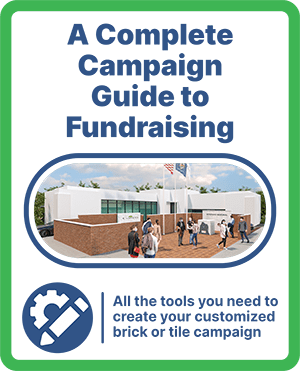Best Ways to Set and Smash Your Fundraising Goals
 Your organization does remarkable work, and you want it to continue to run for years to come. One of the best ways to ensure your organization can do just that is by running an effective fundraising campaign with clearly defined goals—and clearly defined steps to reach those goals. Wondering how to set fundraising goals that make sense for your organization? Keep reading to learn more!
Your organization does remarkable work, and you want it to continue to run for years to come. One of the best ways to ensure your organization can do just that is by running an effective fundraising campaign with clearly defined goals—and clearly defined steps to reach those goals. Wondering how to set fundraising goals that make sense for your organization? Keep reading to learn more!
How to Set Attainable (Yet Still Ambitious) Fundraising Goals
You want to set the bar high. You also want to actually reach that bar. When it comes to goal setting for your money-raising campaigns, you want to strike a balance between what is ambitious and what is attainable.
Ask yourself the following questions to help you better determine what goals you can realistically set.
- What will your campaign fund? A specific event (like a team trip) or total annual expenses for your organization? If it’s the former, simply determine how much this event will cost, and set that amount as your goal. If it’s the latter, determine year-end costs for your organization and use that information to determine how your fundraiser can help pad your organization’s annual funds.
- Is this your first campaign or does it recur annually? If this event is your first, you will have a heftier task ahead of you, as you will not have access to a ready pool of past donors to reach out to. Expect to earn a little less the first year or so you host an event, as it can take time for annual fundraising events to gain steam in your community. Our advice for first-time fundraisers is to focus on reaching new people and spreading the word about the event. Once your annual fundraiser becomes established, word of mouth can complement your advertising efforts, leaving you more time to focus on the event itself. Either way, be sure to factor in any costs of marketing into the campaign.
- Will your event be in person, virtually, or a hybrid? Renting a space to physically host your event will cut into total profits. To cut costs, consider hosting the event either 100% virtually or host a hybrid event, where people can participate both virtually and in person. For example, you could host a hybrid walk-a-thon where participants are physically on site and donors can watch a stream of the event from the comfort of their own homes.
You can begin setting quantifiable metrics with which to measure your campaign’s success after asking yourself these questions.
Further Reading
Goal Setting with the Following Metrics
Set specific fundraising goals that you can use to objectively measure your success. While it’s great to use qualitative data like feedback surveys to measure your event’s success, you will also need hard data and numbers to analyze whether your campaign has met your goals.
Financial Goals
Work smarter, not harder. Set smart goals that you can easily track, such as a specific amount of money you wish to raise for your nonprofit organization.
Examples of financial goals you can set include:
- Average gift amount
- Total donation amount
- Last year’s total donations
Non-financial Goals
You can measure success in more ways than one; don’t neglect to also keep track of your non-financial measures of success!
Examples of these goals include:
- Number of new donors
- Number of repeat donors
- Number of major donors
- Number of individual donors
- Number of business/corporate sponsorships
- Number of donors—individual or organizational—total
Further Reading
How to Achieve Fundraising Success
You’ve set your goals. Great! Now comes the next part of the process: meeting those goals. Below are our top 6 fundraising tips to help you not just meet your fundraising goals, but take your fundraising efforts to the next level.
- Pick the right fundraising activities for your organization and community. Walk-a-thons, bake sales, talent shows, and brick fundraisers are all amazing ways to raise funds for your organization while thoughtfully engaging with your community.
- Don’t neglect online fundraising opportunities. According to one report, virtual giving increased 20.7% from 2019 to 2020 in the United States alone.
- Engage in outreach opportunities not just with potential new supporters, but your current donor base as well.
- Use social media to spread the word about your event. Our explainer video templates, for example, can help draw attention to your event online.
- Make filling out and submitting donation forms easy. You can distribute our easy-to-use, customizable order forms both physically and virtually to give potential donors options on how they want to give.
- Create an online donation page on your organization’s website that runs year-round. Why limit charitable giving to a certain time of year? Allow people to contribute to your cause all year by creating a 24/7 donation portal on your website.
Further Reading
- 21 Nonprofit Fundraising Ideas
- Fundraiser Ideas for Any Organization
- Fundraiser Ideas for Youth Sports
- Online Donation Software
Get Free Stuff
Amplify your hard work by partnering with Fundraising Brick. We make crafting an effective fundraising strategy easy.
Here’s how:
- We offer high-quality, laser-engraved bricks that inspire donors. Don’t believe us? Request a FREE sample to see for yourself how our product compares to the competition.
- We help our clients set up their donation pages to make the entire process that much easier.
- We offer free chat services to both you and your donors to answer any questions you may have about our process.
- We ship for free across the contiguous United States.
- We offer oodles of free templates to help you spread the word about your event and snag donations (see more below).
Our FREE Fundraising Templates
- Check Out Our FREE Whiteboard Explainer Videos
- Discover Our FREE Modern Color Explainer Videos
- Check Out Our FREE 2D Character Explainer Videos
- Get Our FREE Fundraising Poster Templates
- Get Our FREE Flyer Templates
- Download Our FREE Fundraising Packet
Not sure where to get started in terms of setting fundraising goals? Not a problem. Partner with us, and we’ll help you out every step of the way. Contact us today to get started.




